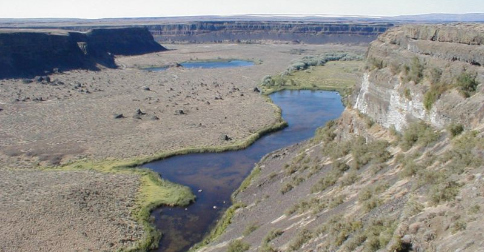- Series:Creation, History, Transcript English
Psalm 93:3-4
“The floods have lifted up, O LORD, the floods have lifted up their voice; the floods lift up their waves. The LORD on high is mightier than the noise of many waters, yea, than the mighty waves of the sea.”
 At about the same time that biology was infected by Darwinian evolutionism, geology had been infected by the ideas of Charles Lyell. He rejected the idea of catastrophism, as described in the Bible. In fact, his motivation was to wean people off believing in what he described as Mosaic Geology – the geology of Moses. Lyell’s concept of geology was one of slow, gradual change – a concept known as uniformitarianism.
At about the same time that biology was infected by Darwinian evolutionism, geology had been infected by the ideas of Charles Lyell. He rejected the idea of catastrophism, as described in the Bible. In fact, his motivation was to wean people off believing in what he described as Mosaic Geology – the geology of Moses. Lyell’s concept of geology was one of slow, gradual change – a concept known as uniformitarianism.
In the 1920s, J. Harlen Bretz noticed that eastern Washington State had a lot of features which seemed to be waterfalls without any water flowing over them. The largest of these was the famous Dry Falls. The region also contained large canyons with flat bottoms and near vertical walls, called coulees. These, coupled with the many large gravel bars, suggested to Bretz that the area must have been scoured at one time by fast-flowing flood water.
Bretz’s idea was ridiculed by the geological establishment for many years because a catastrophic flood sounded too much like the Genesis Flood. However, decades later, more evidence, including aerial views, eventually convinced geologists that Bretz was, in fact, correct and that a catastrophic event had shaped that region. Consequently, uniformitarian ideas were modified to allow for certain catastrophes. Deep-time geologists now think that there must have been several floods in the region, but the evidence only really suggests one, formed by the drainage of a glacial lake at Missoula, Montana, formed from retained floodwater, breaking free, as post-Flood Ice Age glaciers retreated.
Prayer: Your wisdom is higher than ours, Lord God, and Your ways so much greater than ours. Amen.
Author: Paul F. Taylor
Ref: Oard, M.J. and Reed, J.K., How Noah’s Flood Shaped Our World (Powder Springs, GA: Creation Book Publishers), pp. 160-162. Image: CC BY-SA 3.0 Unported.
© 2020 Creation Moments. All rights reserved
